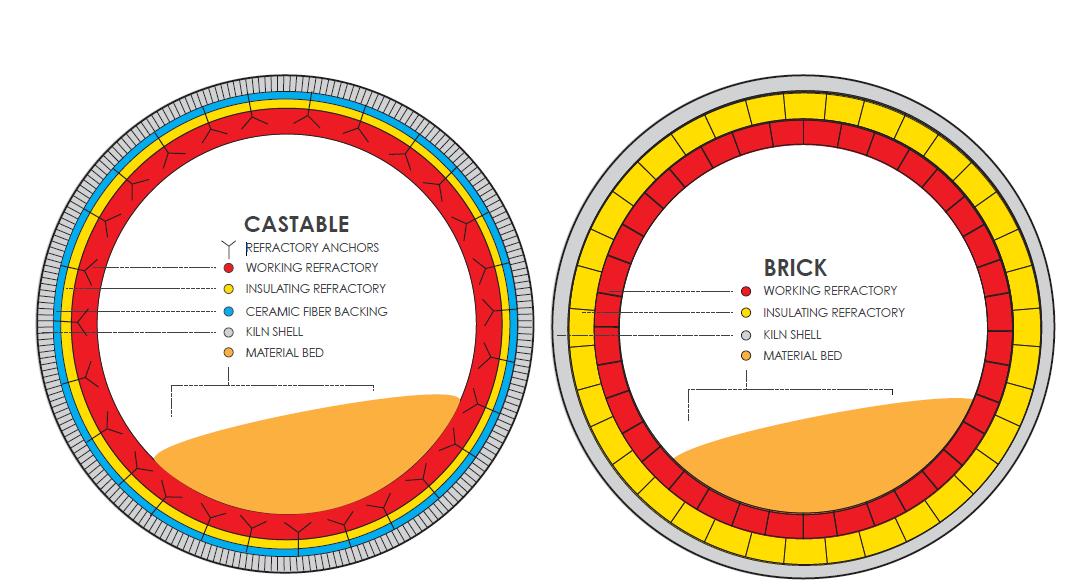Contents
click here to download Holcim , fls smidth , Lafarge , Most importnant manuals , most important excel sheets
click here to download Holcim , fls smidth , Lafarge , Most importnant manuals , most important excel sheets
Brick and Castables

Refractory is also a critical component in maintaining process efficiency, as well as prolonging the life of the kiln.
Refractory protects the shell of the kiln from the temperatures within, and also helps to maintain heat retention inside the kiln.
Refractory is specific to direct-fired kilns. If an indirect kiln were to be lined with refractory, efficiency would be
significantly decreased, because it would be another layer for heat to pass through before it could reach the material.
Two types of refractory are commonly used: Brick and Castable.
Each type offers its own advantages and disadvantages, with the choice depending on cost, material chemistry,
how abrasive the material to be processed is, and how hot the kiln will be.
Refractory can be customized as well. When very high temperatures are involved, it is desirable to use multiple
layers of refractory: a “working” layer, and an insulating layer.
The working layer is a durable, thick layer that can withstand the constant abrasion of the material and the high temperatures inside the kiln.
However, the more dense the refractory, the less insulating capability it has.
For this reason, the insulating layer is needed beneath the working layer to protect the shell of the kiln.
The working layer and insulating layer are typically made of the same material (brick or castable).
Conclusion:
Rotary kilns are extremely customizable, capable of being configured to suit nearly any processing needs.
Components such as seals, bed disturbers, refractory, and more, can all be customized to increase the efficiency of the kiln and create an optimal processing solution.